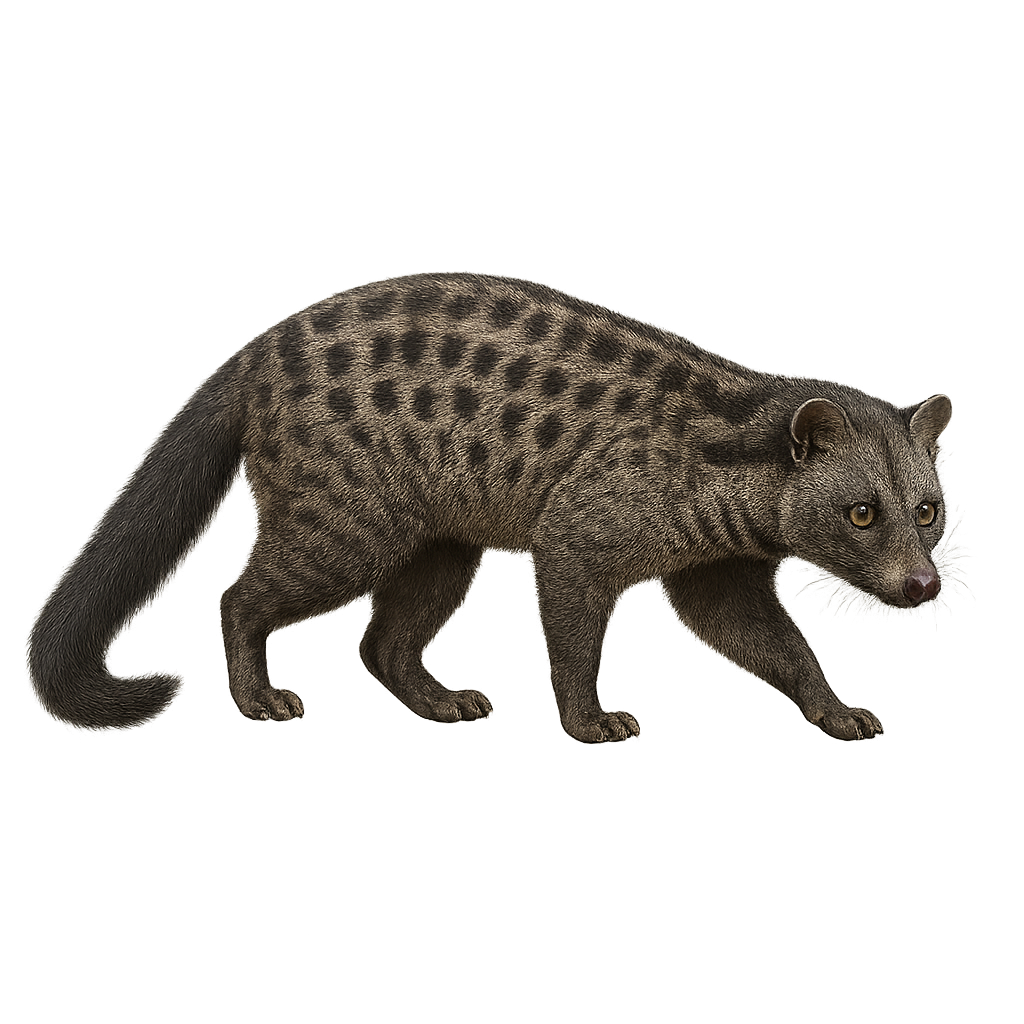Your wildlife photography guide.
Explore the african palm civet in detail, study its behavior, prepare your shots.
Where to observe and photograph the african palm civet in the wild
Learn where and when to spot the african palm civet in the wild, how to identify the species based on distinctive features, and what natural environments it inhabits. The WildlifePhotographer app offers tailored photography tips that reflect the african palm civet’s behavior, helping you capture better wildlife images. Explore the full species profile for key information including description, habitat, active periods, and approach techniques.
African palm civet
Scientific name: Nandinia binotata

IUCN Status: Least Concern
Family: NANDINIIDAE
Group: Mammals
Sensitivity to human approach: Very shy
Minimum approach distance: 20 m
Rut period: March to April
Gestation: 60-75 jours
Births: May to June
Habitat:
Moist forests, scrublands and underground shelters
Activity period :
Mainly active at night, generally discreet during the day.
Identification and description:
The African palm civet is a small feliform mammal, 43–71 cm long and weighing 1.4–4.5 kg, with grey to dark brown fur spotted with dark markings. It is native to sub-Saharan Africa, inhabiting moist forests where it feeds on fruits, aquatic invertebrates and small vertebrates at night. Crepuscular and nocturnal, it sleeps in trees during the day and forages at dusk and night.
Recommended lens:
300 mm – adjust based on distance, desired framing (portrait or habitat), and approach conditions.
Photography tips:
Photograph the African palm civet from a distance using a telephoto lens of ≥300 mm from a concealed hide in the canopy, preferably at dawn or dusk. Use a fast shutter speed and high ISO to compensate for low light, position low to isolate its profile among the branches, and remain silent and patient to avoid disturbance.
The WildlifePhotographer App is coming soon!
Be the first to explore the best nature spots, track rutting seasons, log your observations, and observe more wildlife.
Already 1 430 wildlife lovers subscribed worldwide

